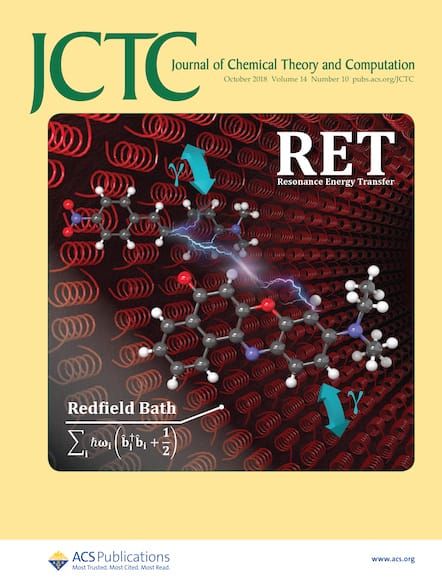Small Molecules Targeting the Structural Dynamics of AR-V7 Partially Disordered Proteins Using Deep Ensemble Docking.
IF 5.7
1区 化学
Q2 CHEMISTRY, PHYSICAL
引用次数: 0
Abstract
The extensive conformational dynamics of partially disordered proteins hinders the efficiency of traditional in-silico structure-based drug discovery approaches due to the challenge of screening large chemical spaces of compounds, albeit with an excessive number of transient binding sites, quickly making this problem intractable. In this study, using the monomer of the AR-V7 transcription factor splicing variant related to prostate cancer as a test case, we present a deep ensemble docking pipeline that accelerates the screening of small molecule binders targeting partially disordered proteins at functional regions. By swiftly identifying the conformational ensemble of AR-V7 and reducing the dimension of binding sites by a factor of 90, we identify functionally relevant binding sites along the AR-V7 structural ensemble at phase separation-prone regions that have been experimentally shown to contribute to enhanced transcription activity and the onset of tumor growth. Following this, we combine physics-based molecular docking and multiobjective classification machine learning models to speed up the screening for binders in a larger chemical space able to target these functional multiple binding sites of AR-V7. This step increases the multibinding site hit rate of small molecules by a factor of 17 compared to naive molecular docking. Finally, assessing in atomistic molecular dynamics the effect of a selected binder on AR-V7 dynamics, we find that in the presence of the ChEMBL22003 compound, AR-V7 exhibits less conformational entropy, smaller solvent exposure of phase separation-prone regions, and higher solvent exposure of other protein regions, promoting this compound as a potential AR-V7 phase separation modulator.基于深系综对接的AR-V7部分无序蛋白结构动力学小分子靶向研究
部分无序蛋白质的广泛构象动力学阻碍了传统的基于硅结构的药物发现方法的效率,因为筛选化合物的大化学空间是一项挑战,尽管有过多的瞬时结合位点,很快使这个问题变得棘手。在本研究中,我们以与前列腺癌相关的AR-V7转录因子剪接变异体单体为测试案例,提出了一个深度集合对接管道,加速筛选针对功能区域部分紊乱蛋白的小分子结合物。通过快速识别AR-V7的构象集合并将结合位点的尺寸降低90倍,我们确定了AR-V7结构集合中相分离易发区域的功能相关结合位点,这些结合位点已被实验证明有助于增强转录活性和肿瘤生长的开始。接下来,我们将基于物理的分子对接和多目标分类机器学习模型相结合,以加快在更大的化学空间中筛选能够靶向AR-V7这些功能性多结合位点的结合剂。与单纯的分子对接相比,这一步骤将小分子的多结合位点命中率提高了17倍。最后,在原子分子动力学中评估了选定的粘合剂对AR-V7动力学的影响,我们发现在ChEMBL22003化合物的存在下,AR-V7表现出较小的构象熵,易相分离区域的溶剂暴露较小,而其他蛋白质区域的溶剂暴露较高,促进了该化合物作为潜在的AR-V7相分离调节剂。
本文章由计算机程序翻译,如有差异,请以英文原文为准。
求助全文
约1分钟内获得全文
求助全文
来源期刊

Journal of Chemical Theory and Computation
化学-物理:原子、分子和化学物理
CiteScore
9.90
自引率
16.40%
发文量
568
审稿时长
1 months
期刊介绍:
The Journal of Chemical Theory and Computation invites new and original contributions with the understanding that, if accepted, they will not be published elsewhere. Papers reporting new theories, methodology, and/or important applications in quantum electronic structure, molecular dynamics, and statistical mechanics are appropriate for submission to this Journal. Specific topics include advances in or applications of ab initio quantum mechanics, density functional theory, design and properties of new materials, surface science, Monte Carlo simulations, solvation models, QM/MM calculations, biomolecular structure prediction, and molecular dynamics in the broadest sense including gas-phase dynamics, ab initio dynamics, biomolecular dynamics, and protein folding. The Journal does not consider papers that are straightforward applications of known methods including DFT and molecular dynamics. The Journal favors submissions that include advances in theory or methodology with applications to compelling problems.
 求助内容:
求助内容: 应助结果提醒方式:
应助结果提醒方式:


